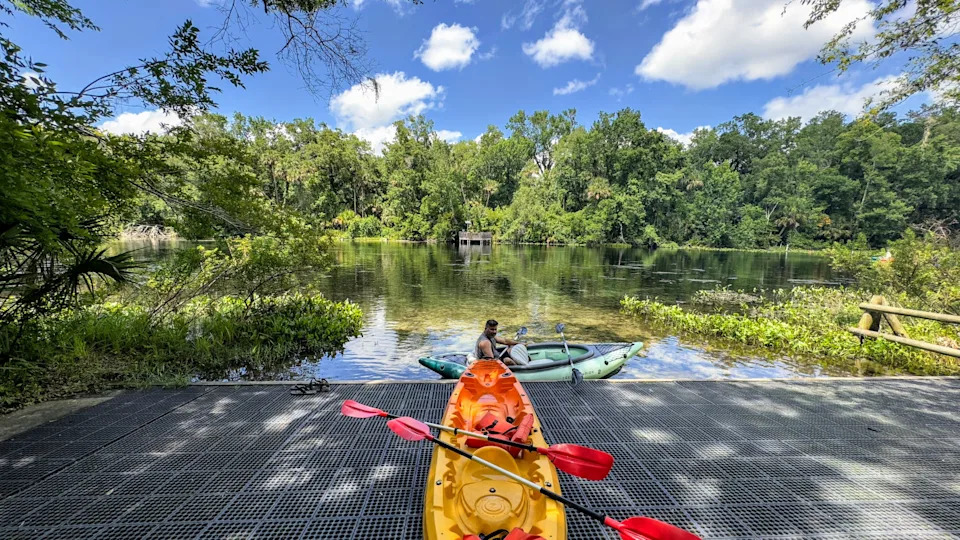U.S. Rep. Randy Fine wants to designate Ocala National Forest and some surrounding springs in Volusia, Flagler and other counties as a national park.
U.S. Rep. Randy Fine has proposed the Florida Springs National Park bill, asking Secretary of the Interior Doug Burgum to study the idea. Fine is planning a press conference to announce the effort in the Ocala National Forest − the oldest national forest east of the Mississippi River − on Aug. 25.
Fine introduced the bill on July 23, the day before Congress went into its long August recess, and it's been referred to the Committee on Natural Resources.
Jonathan Rubin, president and executive director of Clean Earth Initiative, a Boca Raton-based nonprofit that supports clean air and conservation projects statewide, said he is leading a coalition in support of national park status as a means to better protect springs within the forest and beyond.
"Ocala National Forest is a beautiful place that affects everyone in the region," Rubin said, adding the beauty of it isn't just above the ground, but in the Floridian aquifer beneath.
"This whole region is full of natural springs, which Floridians get drinking water from, get bathing water from, and a lot of these springs have been threatened, just by overdevelopment and just not organizing where to develop, and that has led to a lot of flooding issues," Rubin said, "so by protecting this land or putting it all under one umbrella, we're able to ensure that Floridians, at least in Central and North Florida will have drinking water for generations to come."

Where is Ocala National Forest?
Ocala National Forest was established on Nov. 24, 1909. Its 673 square miles straddle the Marion, Putnam and Lake county lines, and it abuts Volusia County on the west side of the St. Johns River and Lake George.
Five springs have been identified within the national forest's boundaries: Alexander Springs, Juniper Springs, Salt Springs, Silver Glen Springs and and Silver Springs State Park.
Rubin said national park status will offer more protection to the environment in and around the massive forest.
Forest rules are more permissive with activities such as cutting down trees, hunting and development allowed with permitting.

"If those were done in a national park, most of those would be banned," he said.
If it becomes a national park, additional environmental gems beyond the forest boundaries could be added.
Fine's bill calls for a study looking at naturally sensitive areas, such as springs, roughly between Jacksonville, Daytona Beach, Orlando, and Gainesville.
What Florida state parks and resources would be studied?
In addition to the Ocala National Forest, the bill identifies more than 40 other areas for consideration to be added to a Florida Springs National Park. These would include state parks such as DeLeon Springs, Blue Spring in Orange City, Lower Wekiva River Preserve in Sanford and Faver-Dykes in St. Augustine.
Others include:
Haw Creek Preserve in Bunnell
Lake George State Forest in DeLeon Springs
Heart Island Conservation Area near Barberville
Longleaf Pine Preserve near DeLand
Tiger Bay State Forest in Daytona Beach
Pellicer Creek Conservation Area in Palm Coast
Princess Place Preserve in Palm Coast
What are Florida's 11 National Park Service properties?
Florida has three national parks: Biscayne, Dry Tortugas, and Everglades, as well as two national seashores: Canaveral and Gulf Islands.
Also listed as U.S. National Park Service properties are Big Cypress National Preserve, Castillo de San Marcos and Fort Matanzas national monuments, DeSoto National Memorial, and Timucuan Ecological & Historic Preserve, home to Fort Caroline National Memorial.
This article originally appeared on The Daytona Beach News-Journal: Could Florida forest become nation's next national park?







Comments